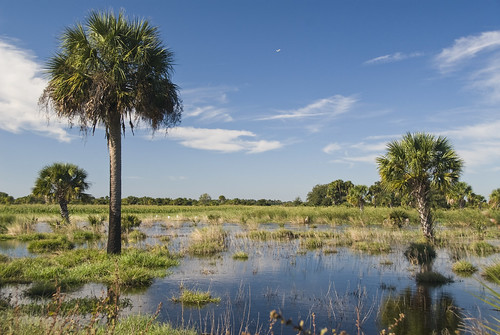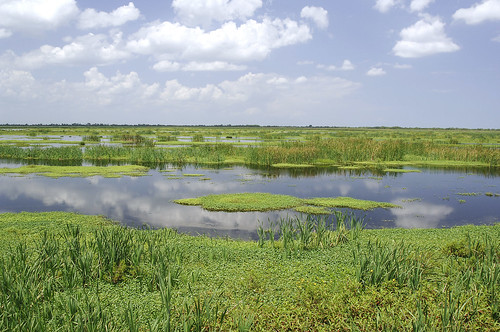
Wetlands are one of nature’s most productive ecosystems. They clean and recharge groundwater; reduce the damaging impacts of floods; enhance wildlife habitat; sequester carbon; and create diverse recreation opportunities such as hunting, fishing, birdwatching and canoeing.
Thousands of landowners voluntarily take big and small actions every day to protect, restore and enhance wetlands and wildlife habitat. Seventy-five percent of the nation’s wetlands are located on private and tribal lands.
For more than 20 years, USDA’s Natural Resources Conservation Service (NRCS) former Wetlands Reserve Program (WRP) was used to enroll record numbers of acreage to protect, restore and enhance wetlands on private lands. During that time, private landowners and entities such as land trusts and conservation organizations enrolled 2.7 million acres through 14,500 agreements for a total NRCS and partner investment of $4.3 billion in financial and technical assistance. NRCS and its partners used the former WRP to ensure they achieved the greatest wetland functions and values, along with optimum wildlife habitat, on every enrolled acre.
The 2014 Farm Bill consolidated WRP into the Agricultural Conservation Easement Program’s Wetland Reserve Easement component to streamline program administration and make it easier for landowners to participate in the program.
Restoring and protecting wetlands through partnerships was a hallmark of the former Wetland Reserve Enhancement Program, a component of the former WRP. Those partnership efforts will continue under the new Wetlands Reserve Enhancement Partnership. With NRCS financial and technical assistance, states, non-governmental organizations and tribes will continue to leverage resources to achieve maximum benefits with wetlands restoration and protection and wildlife habitat.
The cumulative benefits of this wetland conservation work have resulted in tremendous environmental, social and economic benefits nationwide. Florida ranchers are actively engaged in conservation projects to protect the Everglades, the primary source of drinking water for 7 million Floridians. Ninety-five percent of the 100,000 acres enrolled into easements during the past five years in Florida were located in the Northern Everglades Watershed. In the past year alone, NRCS has committed nearly $65 million to restore and protect the Everglades. Most of that assistance went toward conservation easements.
Wildlife habitat created from wetland easements can help prevent listing under the Endangered Species Act and accelerate the recovery of at-risk species. Oregon landowners enrolled acres through WRP conservation easements that contributed to the survival of the Oregon chub, a small fish native to the Willamette River Valley. The habitat restoration and subsequent population increase made the chub the first fish removed from the Endangered Species List by the U.S. Fish and Wildlife Service due to recovery.
Conservation wetland easements will continue to serve as a critical tool in a landowner’s toolbox for wetland restoration, protection and enhancement.
For more information, visit: http://www.nrcs.usda.gov/wps/portal/nrcs/main/national/programs/easements/acep/.

